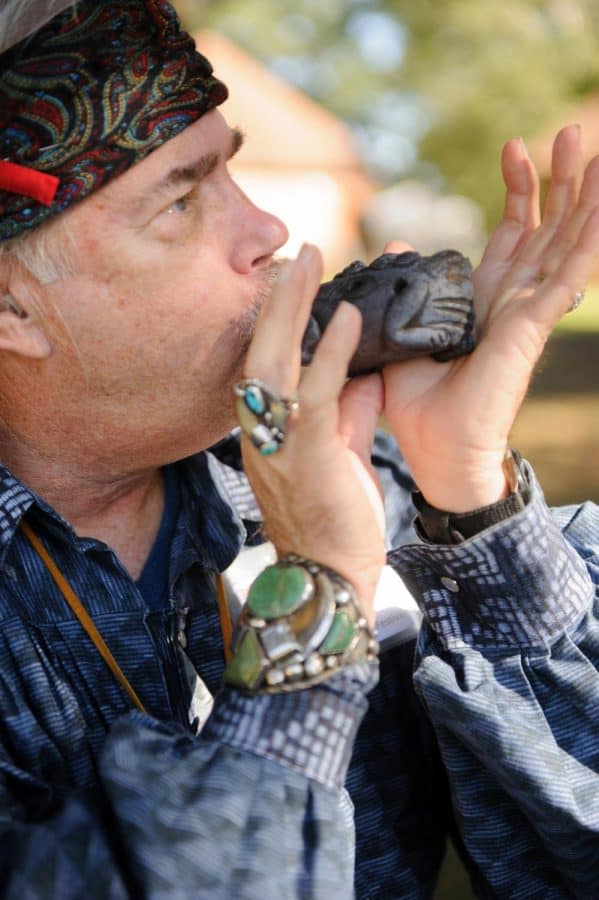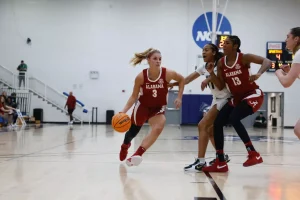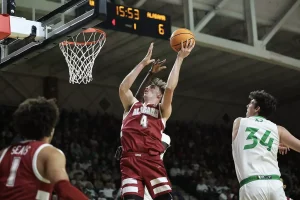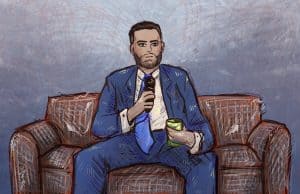Moundville’s Native American Festival goes virtual
October 21, 2020
About 20 minutes south of Tuscaloosa are a set of ancient, giant mounds within a park surrounded by shrubs and trees. There is a path, a nature trail, a campground and swaths of grassland space between the 29 flat-top, human-made hills that loom all around.
Around 800 years ago, The University of Alabama’s Moundville Archaeological Park was one of the busiest places in all of North America, its skyscraper-like mounds signifying wealth and status atop flat, communal plains.
Ancient Mississippian people constructed this site near the Black Warrior River. According to the park’s website, this was a political and religious center for the region and had a large population for the time. Scholars cannot determine the rise or the decline of this place, but by the 1500s the area was largely abandoned.
“You look at the way these mounds were built, you look at the architecture, the agriculture, the astronomy, these are all the things that people don’t associate with Native,” said GrayHawk Perkins, a Choctaw and United Houma storyteller, musician and emcee for Moundville’s annual Native American Festival. “They think little villages, Tipis and all, but here we had whole cities …We did all this stuff long before Europeans came here.”
According to Alex Benitez, Moundville’s museum director, the modern-day descendants from Missisippians and other mound builders come from Choctaw, Creek, Chickasaw and Alabama-Coushatta tribes, as well as Houma communities from Louisiana and others.
When tribe members gather here every October for the Native American Festival, “they consider Moundville an ancestral homeland. So they consider it coming home sometimes when they come to our festival,” Benitez said. “It’s a rich history not only for the park but our performers, who have been coming here going on three decades and some of our visitors, some of them going on three decades.”
For nearly thirty years, the Native American Festival has created and formed a familial, communal atmosphere for visitors from across the Southeast. The festival has included dances, lectures, craft workshops, demonstrations with tools and weapons (such as the atlatl, an ancient type of spear), musical performances and storytelling. One of the festival’s goals is to bridge past and contemporary Native American culture.
This year had much of the same, but due to the COVID-19 pandemic, the event switched to an online format.
“How do you take something that’s so vibrant over four days, with thousands of people here, and connect these visitors with these performers, people coming 20, 30 years? It’s difficult. It was very difficult,” said Benitez, who has given much of the event’s credit to Lindsey Gordon, the festival director, UA Museums Communications Specialist Rebecca Johnson and Allie Sorlie at UA Museum of Natural History.
The silver lining of this format was making the festival accessible to many people across the nation, so viewers could see aspects of the festival they wouldn’t normally have seen. “It allowed a different perspective on the festival,” Benitez said.
Now, Benitez wants to use online streaming, live interviews and recordings in future festivals. The online format also allowed the ability to bring guests who wouldn’t normally be able to participate in the festival, including the first Native American astronaut, Commander John Herrington, who is part of the Chickasaw tribe, and comedian Tatanka Means.
The festival also included a partnership with Tuscaloosa Public Library, where children’s books that relate to Native American culture and history were read virtually.
Instead of having a crowd, the performances were streamed. During the Mystic Wind Choctaw Dancers performance, the group enacted a dance that imitates animals and social status. The cameras were set below and in front of a mound while the performers circled a drum. Children and adults with traditional Native American clothing jangled bells, and a narrator and singer spoke into a microphone as the camera switched between two different angles.
In the same video, Dan Isaac of Choctaw Mississippi and a leader of the Mystic Wind Choctaw Dancers talked about one of the mounds.
“Our people were instructed to always remain here,” Isaac said. “This mound was constructed to bury the bones of our ancestors that were carried along the way. So today, I am proud to be here, to be a member of the Mississippi band of Choctaw Indians and give thanks to our ancestors and the people that are still here today. We have not gone away, and we have not died out.”
Despite the challenges, the festival seemed to have reached its goals this year, including education and sharing of Southeastern Native American Culture.
“It also reminds our visitors that Native American people are still here,” Benitez said. “[They are] thriving, and they still have rich cultures. This is the one place and time that you get to experience that.”
The festival may be over, but the Archaeological Park will still be open. The park is part of The University of Alabama, and Benitez encourages students to drive out to Moundville and experience this history firsthand.










